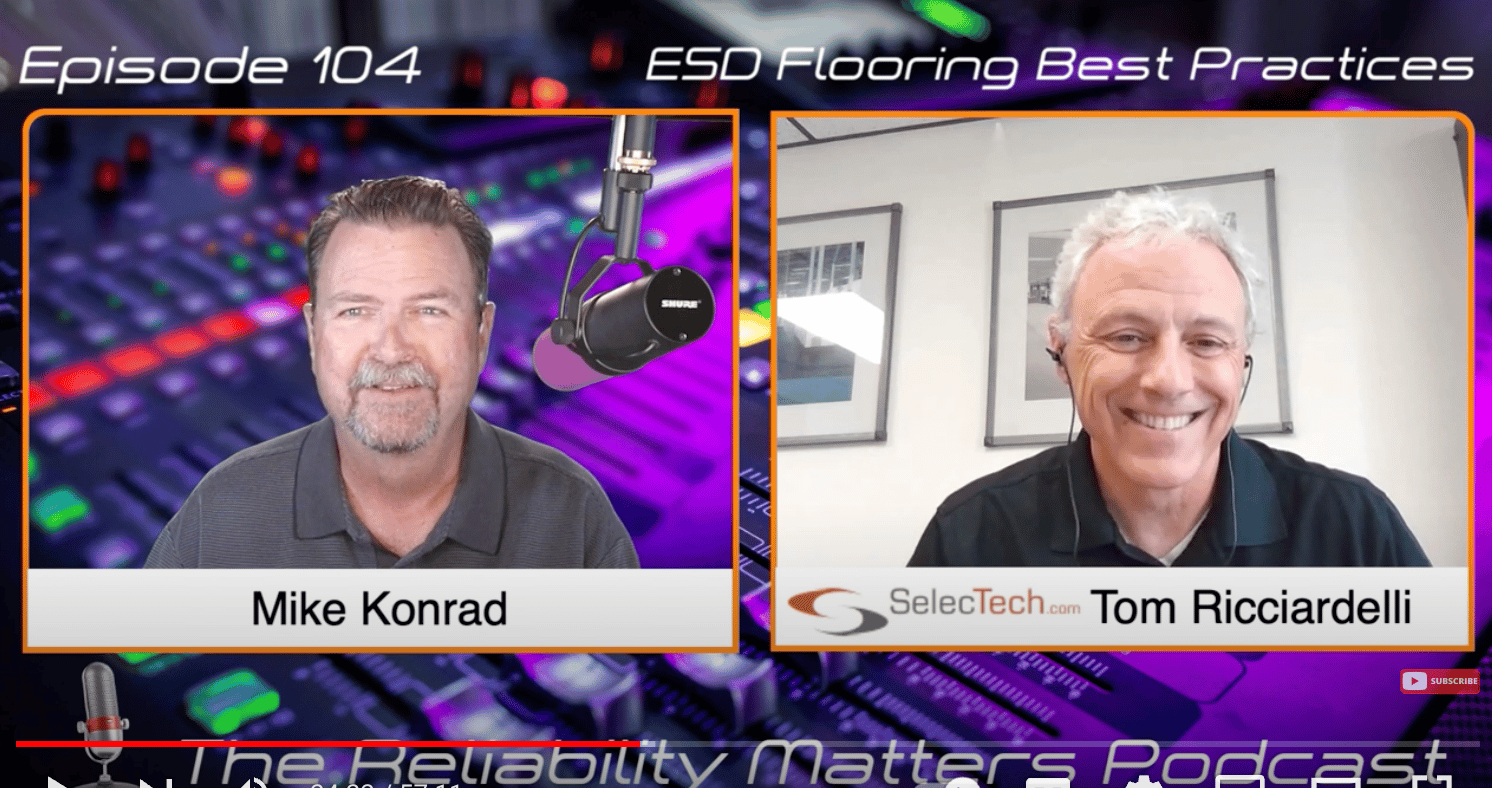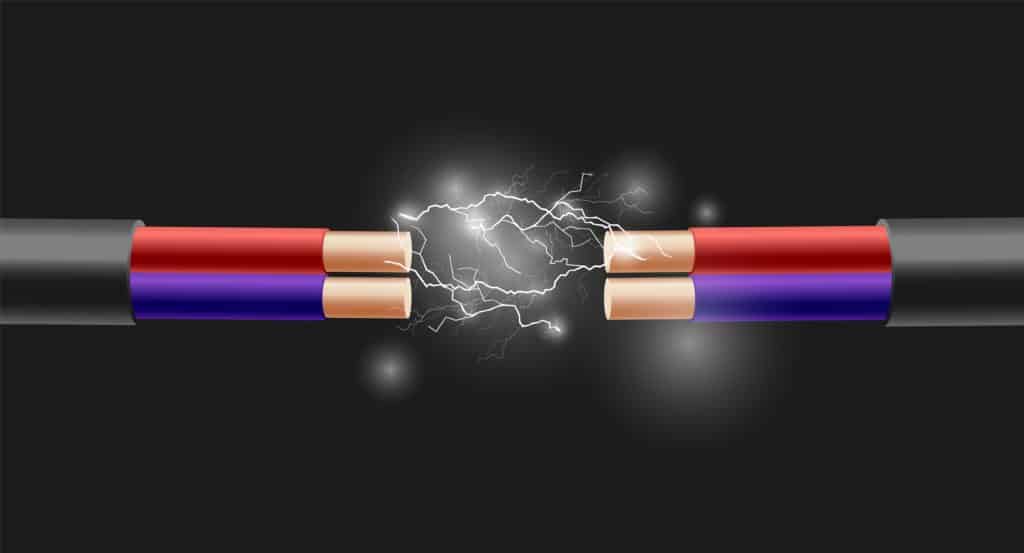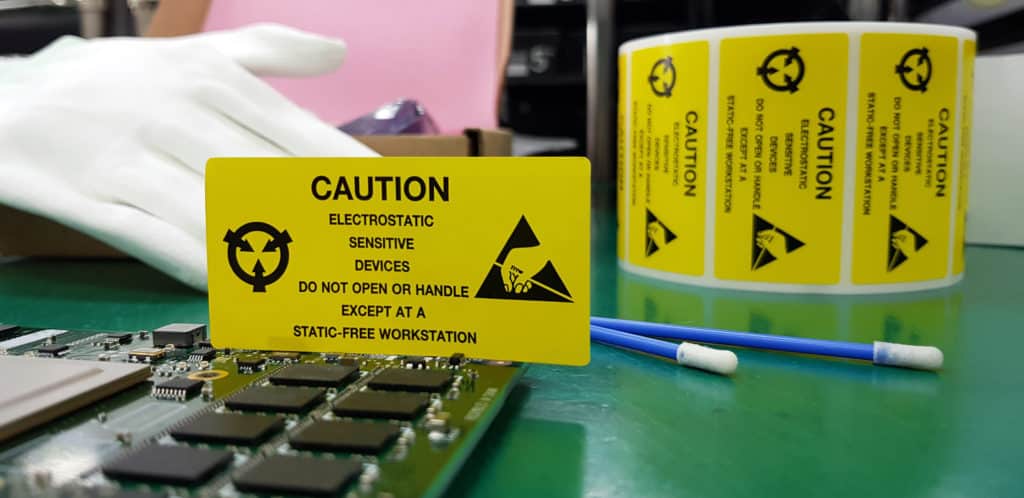
If you’re familiar with the various products offered by SelecTech, you know options range from glue down ESD flooring to interlocking flooring solutions. However, understanding the pros and cons of each and which application is best for your environment can be tricky. In a recent podcast with Mike Konrad, president of SelecTech, Thomas Ricciardelli delves into the electronic manufacturing industry and the flooring options available. Here is a brief overview.

What is electrostatic discharge?
If you’re in the electronic manufacturing industry, you know that protecting your components from electrostatic discharge is crucial. However, what you may not know is what, exactly, ESD is and how it occurs. Simply stated, electrostatic discharge occurs when two objects come in contact with each other and then separate. For example, walking creates a contact between foot and flooring that separates with each step – yes, it can be that simple. However, when the disruption occurs and becomes damaging depends on many factors. Two of the most common factors are the materials in question and humidity of the environment. While electrostatic discharge will always remain present, minimizing the effects is a primary objective in the industry.
Common Solutions
One of the most common and cost effective solutions to eliminate (or minimize) dissipative electrostatic discharge is with footwear. From affordable heel straps to more costly conductive footwear from top name brands, this solution has pros and cons. Heel straps, for instance, are nice on the budget but lose effectiveness when the foot lifts (walking, squatting). Big brands offer more consistent results since, unless the foot completely separates from the flooring, protection remains in place. They are, however, much more expensive than heel straps and aren’t a one size fits all product.
ESD Flooring
While footwear presents a few directions for options, reevaluating the flooring as a whole tends to be the better choice. Why? Well, depending on the flooring solution chosen, you have a solution that will last, is durable, and provides consistent protection against electrostatic discharge. But, the question becomes – which flooring do you go with?

Glue Down ESD Flooring versus Interlocking Flooring
First, let’s take a look at glue down ESD flooring and what it offers. One of the most significant advantages is cost. However, depending on the environment, preparation can be much more intense when installing glue down flooring. In an electronics manufacturing industry, the entire facility must be emptied and subfloor prepped before the new floor can be installed. After scraping concrete, you must ensure you have the right type of glue and that installation is completed perfectly. Without both, your product cost versus life cost will be dramatically reduced.
On the other side, interlocking flooring performs the same function but offers greater flexibility in several areas. One of the biggest advantages is the elimination of heavy subfloor preparation. Instead of clearing a facility and stopping production, interlocking flooring allows you to continue with minimal to no disruption. While interlocking solutions are more expensive upfront, the durability, low maintenance, easy installation, and minimal disruption outweigh the cost in the long run.
Be sure to check out the podcast on YouTube for even more information and details concerning glue down ESD flooring and other options available from SelecTech!
With questions or to order ESD flooring samples, please contact the SelecTech team by calling 508.583.3200.

